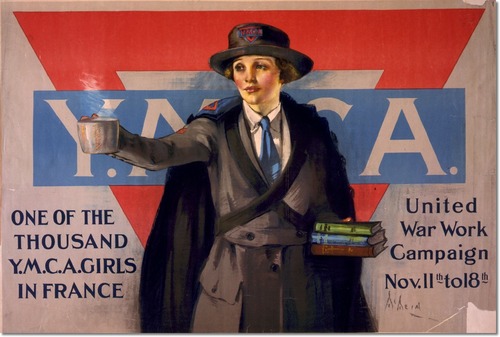By Beulah Supriya
Staff Writer
This fall semester, the Library has on display “Enlisting a Nation: American Visual Propaganda of World War I ” to commemorate the centenary of World War I. The posters are on display on the third floor of the Kellogg library gallery and are open to the public. “During World War I, the government started its first major and organized propaganda, it was so effective that the same methods were used for the WW2 as well,” the curator, Heather Northway, said.
Posters on display are a part of Northway’s private collection. With experience ranging from collection management to giving curatorial gallery talks, her main aim in having the propaganda highlighted this year is not only to observe the centenary of the First World War but also to honor the soldiers, show the changes in society and give students a new perspective with the help of these compelling visual aids.
Though under the backdrop of the war, many topics are covered by the posters, right from recruitment of soldiers to buying Liberty bonds to support the war. It is during this time that Uncle Sam became an iconic figure and stayed that way ever since. Buying Liberty bonds weren’t popular at first due to the low interest rates, but as the government got support from celebrities like Charlie Chaplin, the propaganda gained momentum.
Since there were no radios those days these posters were the main way of communicating to the people, which is one reason for their importance. In it, war heroes like General Pershing were shown encouraging people to do their bit and patriotism increased while others showed the darker side of war which let those who weren’t feeling guilty, thus they were considered very influential. Many organizations rendered their support to the cause like the Red Cross, Y.WCA, Y.MC.A and even the Boy Scouts whose motto was “Every Scout to Save a Soldier.” Ms. Northway brought to notice the fact that all shown in the posters were fair skinned, but times have changed and now various ethnicities are shown as an integral part of the country.
Women slowly gained prominence in society and it was during this time that they started working in numbers which was more than ever before. “These posters also help mark the distance between past and present. During World War I, women gained independence as they entered the workforce in greater numbers than ever before,” history professor, Katherine Hijar, said. She also spoke about the exhibit and its relation with students.”If students were to dig deeper, there is a lot more to find. For instance, these posters represent the early use of some advertising strategies that we recognize today, such as the use of beautiful young white women to engage men and women alike and draw them to the posters’ messages,” Hijar said.
Music was another major influence on the society and to talk more on it and give us a glimpse into the past. The Arts & Lectures series are organizing an event called Time Capsule of Music: 1900-1930 by Howard Anton Duncan on Oct. 28. To know more about the exhibits or the war and the lessons we learn from it, there will be a Faculty Perspective on WWI on Tuesday, Nov. 18 at the USU. The WWI exhibit will be on display throughout the fall semester.


